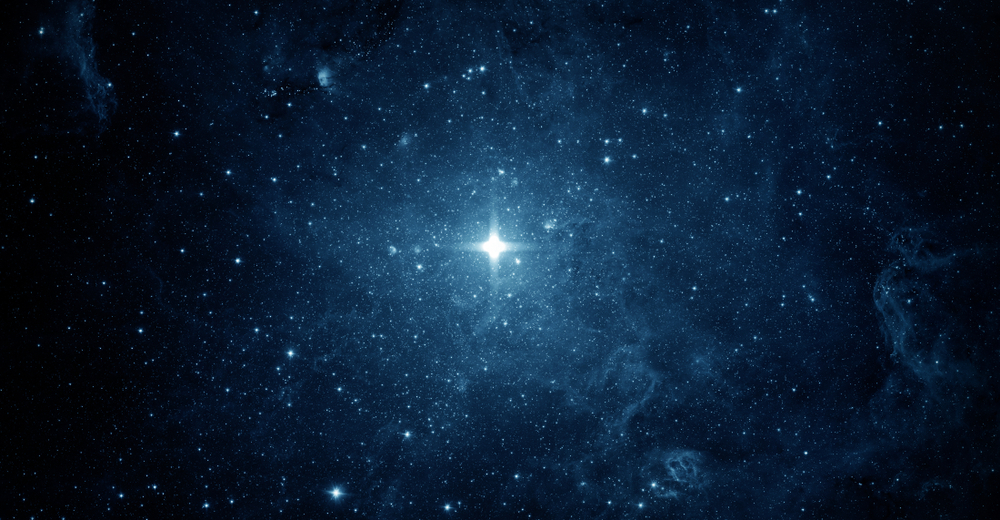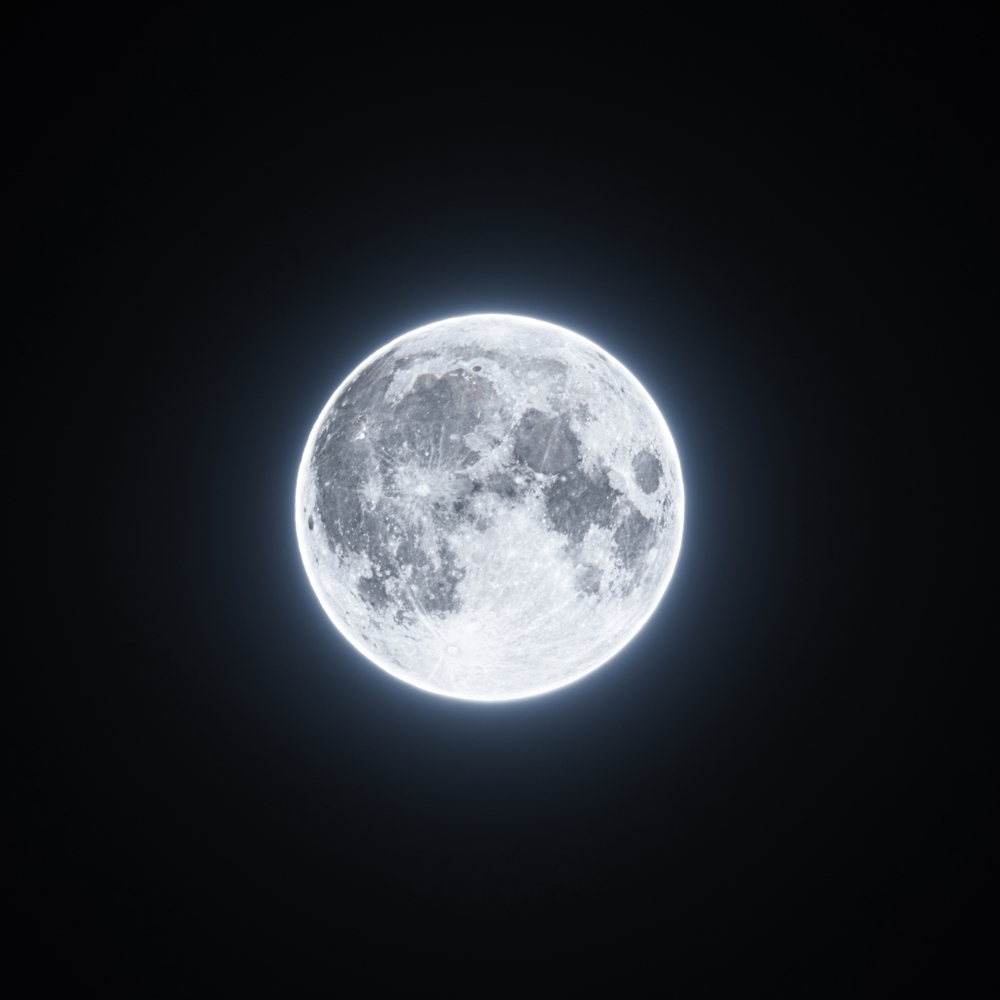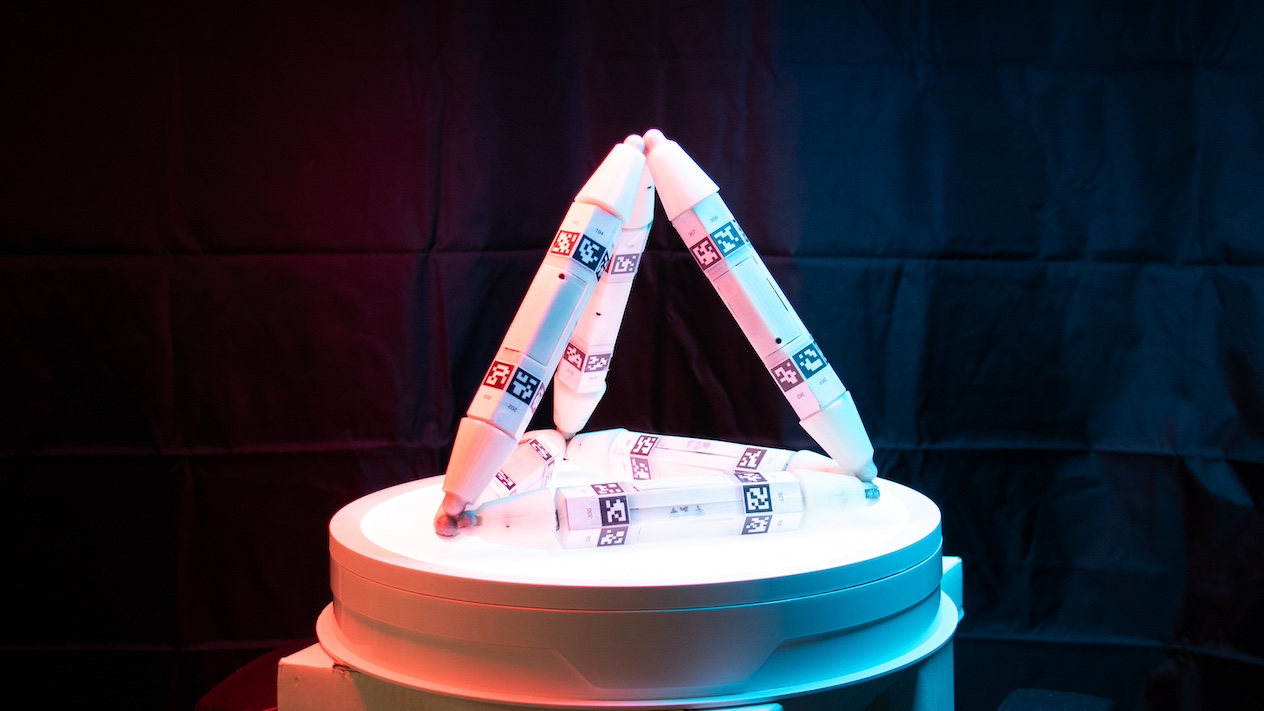The Universe Started as a “Hot Soup of Particles and Photons" 13.8 Billion Years Ago



Top Democrats on the House Science Committee are accusing NASA leadership of impounding funds and taking steps to implement a budget proposal for fiscal year 2026 before Congress can act.
The post House Democrats accuse NASA of illegal impoundment of funds appeared first on SpaceNews.

Three teams of researchers in the US and France have independently developed a new technique to visualize the positions of atoms in real, continuous space, rather than at discrete sites on a lattice. By applying this method, the teams captured “snapshots” of weakly interacting bosons, non-interacting fermions and strongly interacting fermions and made in-situ measurements of the correlation functions that characterize these different quantum gases. Their work constitutes the first experimental measurements of these correlation functions in continuous space – a benchmark in the development of techniques for understanding fermionic and bosonic systems, as well as for studying strongly interacting systems.
Quantum many-body systems exhibit a rich and complex range of phenomena that cannot be described by the single-particle picture. Simulating such systems theoretically is thus rather difficult, as their degrees of freedom (and the corresponding size of their quantum Hilbert spaces) increase exponentially with the number of particles. Highly controllable quantum platforms like ultracold atoms in optical lattices are therefore useful tools for capturing and visualizing the physics of many-body phenomena.
The three research groups followed similar “recipes” in producing their atomic snapshots. First, they prepared a dilute quantum gas in an optical trap created by a lattice of laser beams. This lattice was configured such that the atoms experienced strong confinement in the vertical direction but moved freely in the xy-plane of the trap. Next, the researchers suddenly increased the strength of the lattice in the plane to “freeze” the atoms’ motion and project their positions onto a two-dimensional square lattice. Finally, they took snapshots of the atoms by detecting the fluorescence they produced when cooled with lasers. Importantly, the density of the gases was low enough that the separation between two atoms was larger than the spacing between the sites of the lattice, facilitating the measurement of correlations between atoms.
One of the three groups, led by Tarik Yefsah in Paris’ Kastler Brossel Laboratory (KBL), studied a non-interacting two-dimensional gas of fermionic lithium-6 (6Li) atoms. After confining a low-density cloud of these atoms in a two-dimensional optical lattice, Yefsah and colleagues registered their positions by applying a technique called Raman sideband laser cooling.
The KBL team’s experiment showed, for the first time, the shape of a parameter called the two-point correlator (g2) in continuous space. These measurements clearly demonstrated the existence of a “fermi hole”: at small interatomic distances, the value of this two-point correlator tends to zero, but as the distance increases, it tends to one. This behaviour was expected, since the Pauli exclusion principle makes it impossible for two fermions with the same quantum numbers to occupy the same position. However, the paper’s first author Tim de Jongh, who is now a postdoctoral researcher at the University of Colorado Boulder in the US, explains that being able to measure “the exact shape of the correlation function at the percent precision level” is new, and a distinguishing feature of their work.
The KBL team’s measurement also provides both two-body and three-body correlation functions for the atoms, making it possible to compare them directly. In principle, the technique could even be extended to correlations of arbitrarily high order.
Meanwhile, researchers directed by Wolfgang Ketterle of the Massachusetts Institute of Technology (MIT) developed and applied quantum gas microscopy to study how bosons bunch together. Unlike fermions, bosons do not obey the Pauli exclusion principle. In fact, if the temperature is low enough, they can enter a phase known as a Bose-Einstein condensate (BEC) in which their de Broglie wavelengths overlap and they occupy the same quantum state.
By confining a dilute bosonic gas of approximately 100 rubidium atoms in a sheet trap and cooling them to just above the critical temperature (Tc) for the onset of BEC, Ketterle and colleagues were able to make the first in situ measurement of the correlation length in a two-dimensional ultracold bosonic gas. In contrast to Yefsah’s group, Ketterle and colleagues employed polarization cooling to detect the atoms’ positions. They also focused on a different correlation function; specifically, the second-order correlation function of bosonic bunching at T>Tc.
When the system’s temperature is high enough (54 nK above absolute zero, in this experiment), the correlation function is nearly 1, meaning that the atoms’ thermal de-Broglie waves are too short to “notice” each other. But when the sample is cooled to a lower temperature of 6.4 nK, the thermal de-Broglie wavelength becomes commensurate with the interparticle spacing r, and the correlation function exhibits the bunching behavior expected for bosons in this regime, decreasing from its maximum value at r = 0 down to 1 as the interparticle spacing increases.
In an ideal system, the maximum value of the correlation function would be 2. However, in this experiment, the spatial resolution of the grid and the quasi-two-dimensional nature of the trapped gas reduce the maximum to 1.3. Enid Cruz Colón, a PhD student in Ketterle’s group, explains that this experiment is sensitive to parity projection, meaning that the count number of atoms per site is either even or odd. This implies that doubly occupied sites are registered as empty sites, which directly shrinks the measured value of g2
With Yefsah and colleagues focusing on fermionic correlations, and Ketterle’s group focusing on bosons, a third team led by MIT’s Martin Zwierlein found its niche by studying mixtures of bosons and fermions. Specifically, the team measured the pair correlation function for a mixture of a thermal Bose gas composed of sodium-23 (23Na) atoms and a degenerate Fermi gas of 6Li. As expected, they found that the probability of finding two particles together is enhanced for bosons and diminished for fermions.
In a further experiment, Zwierlein and colleagues studied a strongly interacting Fermi gas and measured its density-density correlation function. By increasing the strength of the interactions, they caused the atoms in this gas to pair up, triggering a transition into the BCS (Bardeen-Cooper-Schriefer) regime associated with paired electrons in superconductors. For atoms in a BEC, the density-density correlation function shows a strong bunching tendency at short distances; in the BCS regime, in contrast, the correlation depicts a long-range pairing where atoms form so-called Cooper pairs as the strength of their interactions increases.
By applying the new quantum gas microscopy technique to the study of strongly interacting Fermi gases, Ruixiao Yao, a PhD student in Zwierlein’s group and the paper’s first author, notes that they have opened the door to applications in quantum simulation. Such strongly correlated systems, Yao highlights, are especially difficult to simulate on classical computers.
The three teams describe their work in separate papers in Physical Review Letters.
The post Physicists take ‘snapshots’ of quantum gases in continuous space appeared first on Physics World.
Women and ethnic-minority groups are still significantly underrepresented in UK astronomy and geophysics, with the fields becoming more white. That is according to the latest demographic survey conducted by the Royal Astronomical Society (RAS), which concludes that decades of initiatives to improve representation have “failed”.
Based on data collected in 2023, the survey reveals more people working in astronomy and solar-system science than ever before, although the geophysics community has shrunk since 2016. According to university admissions data acquired by the RAS, about 80% of students who started undergraduate astronomy and geophysics courses in 2022 were white, slightly less than the 83% overall proportion of white people in the UK.
However, among permanent astronomy and geophysics staff, 97% of British respondents to the RAS survey are white, up form 95% in 2016. The makeup of postgraduate students was similar, with 92% of British students – who accounted for 70% of postgraduate respondents – stating they are white, up from 87% in 2016.
The survey also finds that the proportion of women in professor, senior lecturer or reader roles increased from 2010 to 2023 in astronomy and solar-system science, but has stagnated at lecturer level in astronomy since 2016 and dropped in “solid Earth” geophysics to 19%. The picture is better at more junior levels, with women making up 28% of postdocs in astronomy and solar-system science and 34% in solid Earth geophysics.
“I very much want to see far more women and people from minority ethnic groups working as astronomers and geophysicists, and we have to redouble our efforts to make that happen,” says Robert Massey, deputy executive director of the RAS, who co-authored the survey and presented its results at the National Astronomy Meeting 2025 in Durham last week.
RAS president Mike Lockwood agrees, stating that effective policies and strategies are now needed. “One only has to look at the history of science and mathematics to understand that talent can, has, and does come from absolutely anywhere in society, and our concern is that astronomy and geophysics in the UK is missing out on some of the best natural talent available to us,” Lockwood adds.
The post Diversity in UK astronomy and geophysics declining, finds survey appeared first on Physics World.

Gen. Michael Guetlein was confirmed as direct reporting program manager for the Golden Dome missile defense initiative
The post Senate confirms Guetlein to lead Golden Dome appeared first on SpaceNews.

Blue Origin has confirmed that a NASA Mars smallsat mission, bumped from the inaugural launch of the New Glenn rocket, will be on the vehicle’s second flight later this year.
The post ESCAPADE to launch on second New Glenn appeared first on SpaceNews.



The first experimental evidence of the breaking of charge–parity (CP) symmetry in baryons has been obtained by CERN’s LHCb Collaboration. The result is consistent with the Standard Model of particle physics and could lead to constraints on theoretical attempts to extend the Standard Model to explain the excess of matter over antimatter in the universe.
Current models of cosmology say that the Big Bang produced a giant burst of matter and antimatter, the vast majority of which recombined and annihilated shortly afterwards. Today however, the universe appears to be made almost exclusively of matter with very little antimatter in evidence. This excess of matter is not explained by the Standard Model and it existence is an important mystery in physics.
In 1964, James Cronin, Valentine Fitch and colleagues at Princeton University in the US conducted an experiment on the decay of neutral K mesons. This showed that the weak interaction violated CP symmetry, indicating that matter and antimatter could behave differently. Fitch and Cronin bagged the 1980 Nobel Prize for Physics and the Soviet physicist Andrei Sakharov subsequently suggested that, if amplified at very high mass scales in the early universe, CP violation could have induced the matter–antimatter asymmetry shortly after the Big Bang.
Numerous observations of CP violation have subsequently been made in other mesonic systems. The phenomenon is now an accepted part of the Standard Model is parametrized by the Cabibbo–Kobayashi–Maskawa (CKM) matrix. This describes the various probabilities of quarks of different generations changing into each other through the weak interaction – a process called mixing.
However, the CP violation produced through the CKM mechanism is much smaller effect than would have been required to create the matter left over by the Big Bang, as Xueting Yang of China’s Peking University explains.
“The number of baryons remaining divided by the number of photons produced when the baryons and antibaryons met and produced two photons is required to be about 10-10 in Big Bang theory…whereas this kind of quantity is only 10-18 in the Standard Model prediction.”
What is more, CP violation had never been observed in baryons. “Theoretically the prediction for baryon decay is very imprecise,” says Yang, who is a member of the LHCb collaboration. “It’s much more difficult to calculate it than the meson decays because there’s some interaction with the strong force.” Baryons (mostly protons and neutrons) make up almost all the hadronic matter in the universe, so this left open the slight possibility that the explanation might lie in some inconsistency between baryonic CP violation and the Standard Model prediction.
In the new work, Yang and colleagues at LHCb looked at the decays of beauty (or bottom) baryons and antibaryons. These heavy cousins of neutrons contain an up quark, a down quark and a beauty quark and were produced in proton–proton collisions at the Large Hadron Collider in 2011–2018. These baryons and antibaryons can decay via multiple channels. In one, a baryon decays to a proton, a positive K-meson and a pair of pions – or, conversely, an antibaryon decays to an antiproton, a negative K-meson and a pair of pions. CP violation should create an asymmetry between these processes, and the researchers looked for evidence of this asymmetry in the numbers of particles detected at different energies from all the collisions.
The team found that the CP violation seen was consistent with the Standard Model and inconsistent with zero by 5.2σ. “The experimental result is more precise than what we can get from theory,” says Yang. Other LHCb researchers scrutinized alternative decay channels of the beauty baryon: “Their measurement results are still consistent with CP symmetry…There should be CP violation also in their decay channels, but we don’t have enough statistics to claim that the deviation is more than 5σ.”
The current data do not rule any extensions to the current Standard Model out, says Yang, simply because none of those extensions make precise predictions about the overall degree of CP violation expected in baryons. However, the LHC is now in its third run, and the researchers hope to acquire information on, for example, the intermediate particles involved in the decay: “We may be able to provide some measurements that are more comparable for theories and which can provide some constraints on the Standard Model predictions for CP violation,” says Yang.
The research is described in a paper in Nature.
“It’s an important paper – an old type of CP violation in a new system,” says Tom Browder of the University of Hawaii. “Theorists will try to interpret this within the context of the Standard Model, and there have already been some attempts, but there are some uncertainties due to the strong interaction that preclude making a precise test.” He says the results could nevertheless potentially help to constrain extensions of the Standard Model, such as CP violating decays involving dark matter proposed by the late Ann Nelson at the University of Washington in Seattle and her colleagues.
The post CP violation in baryons is seen for the first time at CERN appeared first on Physics World.



In this week’s episode of Space Minds, host Mike Gruss is joined by Matthew Weinzierl, Senior Associate Dean at Harvard Business School, and Brendan Rosseau, Strategy Manager at Blue Origin, for a deep dive into the forces reshaping the global space economy as outlined in their book Space to Grow.
The post Fact or fiction on the future of the space economy appeared first on SpaceNews.
This episode of the Physics World Weekly podcast features Travis Humble, who is director of the Quantum Science Center at Oak Ridge National Laboratory.
Located in the US state of Tennessee, Oak Ridge is run by the US Department of Energy (DOE). The Quantum Science Center links Oak Ridge with other US national labs, universities and companies.
Humble explains how these collaborations ensure that Oak Ridge’s powerful facilities and instruments are used to create new quantum technologies. He also explains how the lab’s expertise in quantum and conventional computing is benefiting the academic and industrial communities.
 This podcast is supported by American Elements, the world’s leading manufacturer of engineered and advanced materials. The company’s ability to scale laboratory breakthroughs to industrial production has contributed to many of the most significant technological advancements since 1990 – including LED lighting, smartphones, and electric vehicles.
This podcast is supported by American Elements, the world’s leading manufacturer of engineered and advanced materials. The company’s ability to scale laboratory breakthroughs to industrial production has contributed to many of the most significant technological advancements since 1990 – including LED lighting, smartphones, and electric vehicles.
The post Oak Ridge’s Quantum Science Center takes a multidisciplinary approach to developing quantum materials and technologies appeared first on Physics World.

Gilbert, AZ – Moog Inc. (NYSE: MOG.A and MOG.B), a worldwide designer, manufacturer and systems integrator of high-performance precision motion and control systems, will be participating in the IEEE Space […]
The post Moog Highlights Advancements in High-Speed Processor at IEEE Space Computing Conference appeared first on SpaceNews.

A long-time adviser to NASA and other agencies on space issues says he is concerned about moves by the administration to diminish the role of advisory committees.
The post Lyles concerned about sweeping changes to advisory committees appeared first on SpaceNews.

A week after being named NASA’s new acting administrator, Secretary of Transportation Sean Duffy appears to be just getting started on that job while continuing to lead the Transportation Department.
The post Duffy just getting started as acting NASA administrator appeared first on SpaceNews.

At a time when the race to conquer the Moon is accelerating, with dozens of missions planned for the coming years, HTR decides, on a worldwide exclusive basis, to make […]
The post HTR makes available engineering models of full-metal elastic Lunar wheels appeared first on SpaceNews.